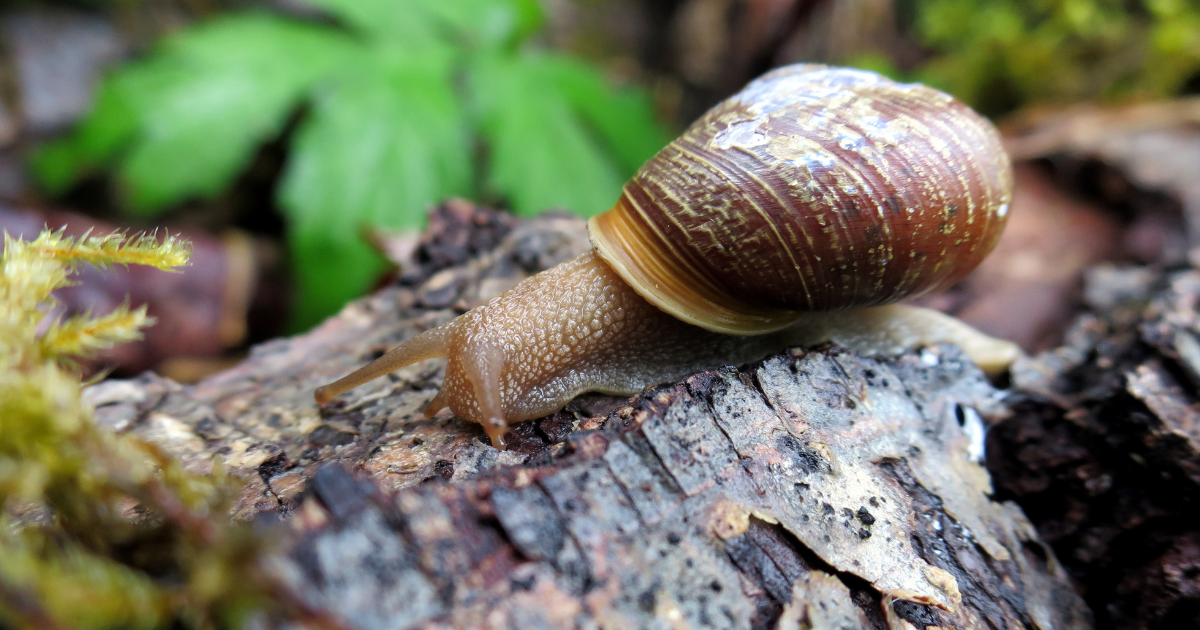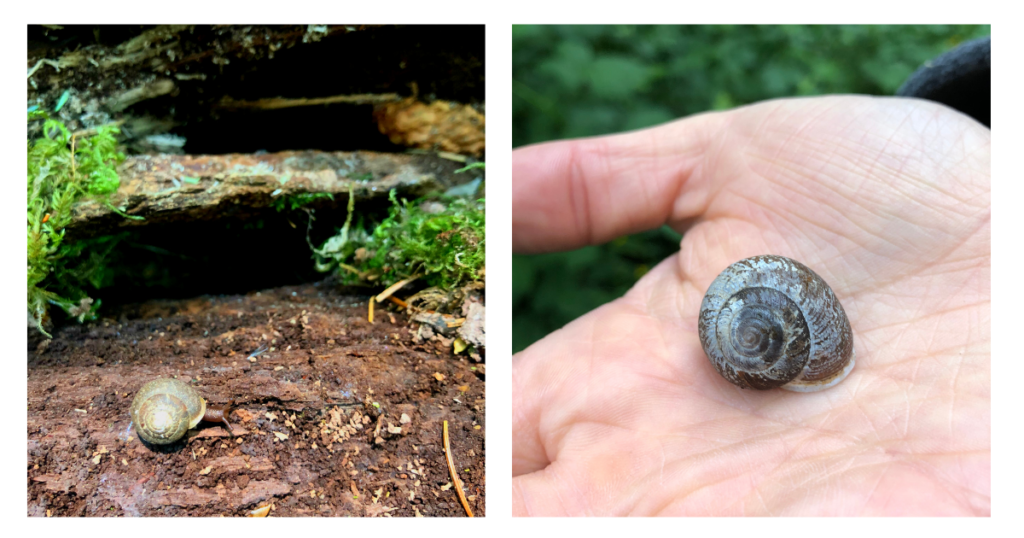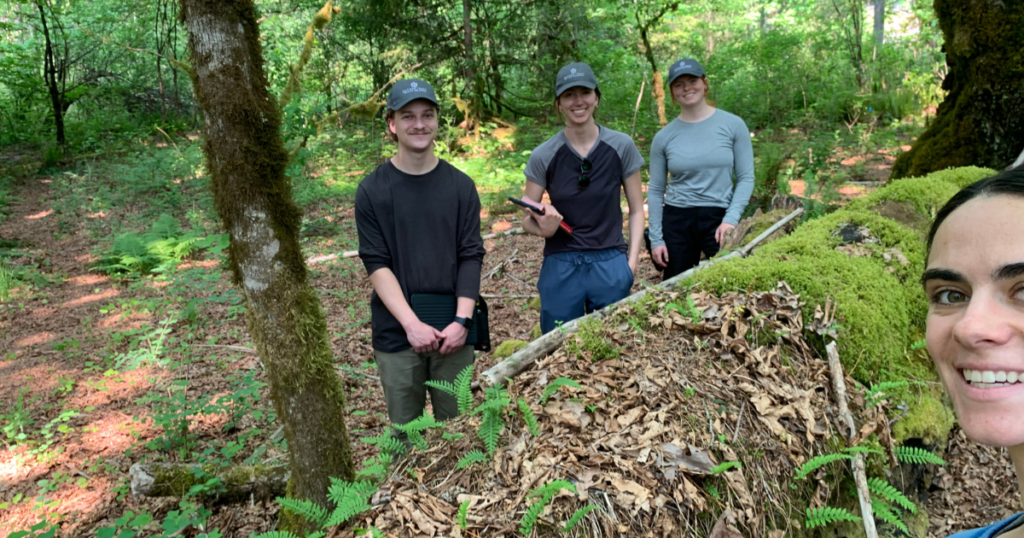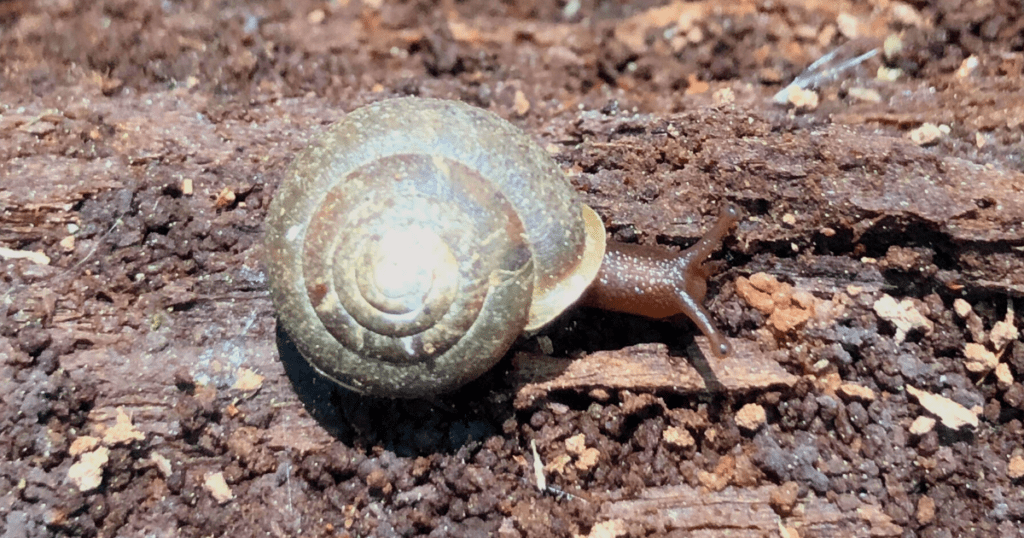
Why do we care so much about biodiversity? Not only do we believe that all creatures have inherent value and a right to life, but healthy biodiversity regulates ecosystem services which both directly and indirectly impact human health. This ranges from regulating food systems through pollination to mitigating flood risk through healthy wetlands. One of the leading causes of the biodiversity crisis (the rapid loss of species and degradation of habitat) is habitat loss and fragmentation. At the Nature Trust of British Columbia, we address this crisis by acquiring habitats of high biodiversity values and at the greatest risk of being lost. Of the 3,808 native species in BC for which conservation status has been assessed, 43% are of provincial conservation concern. One of these species of concern is the small but mighty Oregon forestsnail (Allogona townsendiana).
While the Oregon forestsnail might not be as glamorous as other, more charismatic species-at-risk, it is no less important! Snails and other gastropods have important ecological roles within their habitats. Although the Oregon forestsnail’s ecology is not thoroughly researched, studies show that other similar land snails play critical roles as decomposers and seed dispersers. So, it is reasonable to assume that the Oregon forestsnail facilitates similar ecological processes, and it may have even more critical roles in its environment that we have not yet observed!

Photos of the Oregon forestsnail captured by our South Coast Conservation Field Crew
Oregon forestsnails are found in mixed-deciduous forests, usually in association with big leaf maple (Acer macrophyllum). The snail is also found in more open habitats along forest edges and meadows, as well as riparian areas. Critical habitat components are moisture, woody debris, leaf litter, and herbaceous vegetation. These components ensure the snails are safe from drying out, and have ample access to cover and food. Another plant the Oregon forestsnail is often found near is stinging nettle (Urtica dioica), and while we do not know for certain why, it is likely due to the nettle containing calcium and other minerals which are important for shell growth and development.
The Oregon forestsnail is Red-listed, and considered endangered under the Committee on the Status of Endangered Species in Canada (COSEWIC) and the Species at Risk Act (SARA). Like many at risk species, this snail is considered vulnerable to extirpation or extinction due to climate change, habitat loss/fragmentation, and invasive species. Because the snail has poor dispersal abilities, it is unable to establish new habitats, making habitat loss and fragmentation particularly devastating impacts.

The South Coast Conservation Field Crew conducting Oregon forestsnail detection surveys.
This summer, the South Coast Conservation Crew conducted Oregon forestsnail detection surveys to determine whether our conservation areas support this at-risk species. These surveys, conducted between April in June when the snails are active, were completed by crew members while walking through potentially suitable habitat and visually searching the forest floor for snails. Our South Coast Conservation Field Crew has been lucky enough to observe these elusive snails twice this season! They were spotted at the Squamish Estuary and Chilliwack River.
Tips for Identifying the Oregon Forest Snail
When completing detection surveys for the Oregon forestsnail, it is crucial to be able to differentiate Oregon forestsnail from others snail species. In BC, we have several species of land snails. Some common snail species you may find are the Grovesnail, Pacific sideband, Lancetooth and northwest Hesperian.
The Oregon forestsnail can be distinguished from these species by:
- A thick white lip on the shell opening, or aperture,
- A sometimes bleached and flaky shell appearance, and
- A deep central pit on its underside.
The Oregon forestsnail can be a variety of colours as well, such as yellow and brown, so colour alone is not a sufficient identification trait.

Close-up of the Oregonforestsnail
At the Nature Trust of BC, we are working hard to protect habitat for species at risk such as the Oregon forestsnail for generations to come. Consider donating today to make a big impact on BC’s wildlife, insects and fish!
 Written by Keegan Wilcock, Crew Member with the South Coast Conservation Field Crew
Written by Keegan Wilcock, Crew Member with the South Coast Conservation Field Crew

